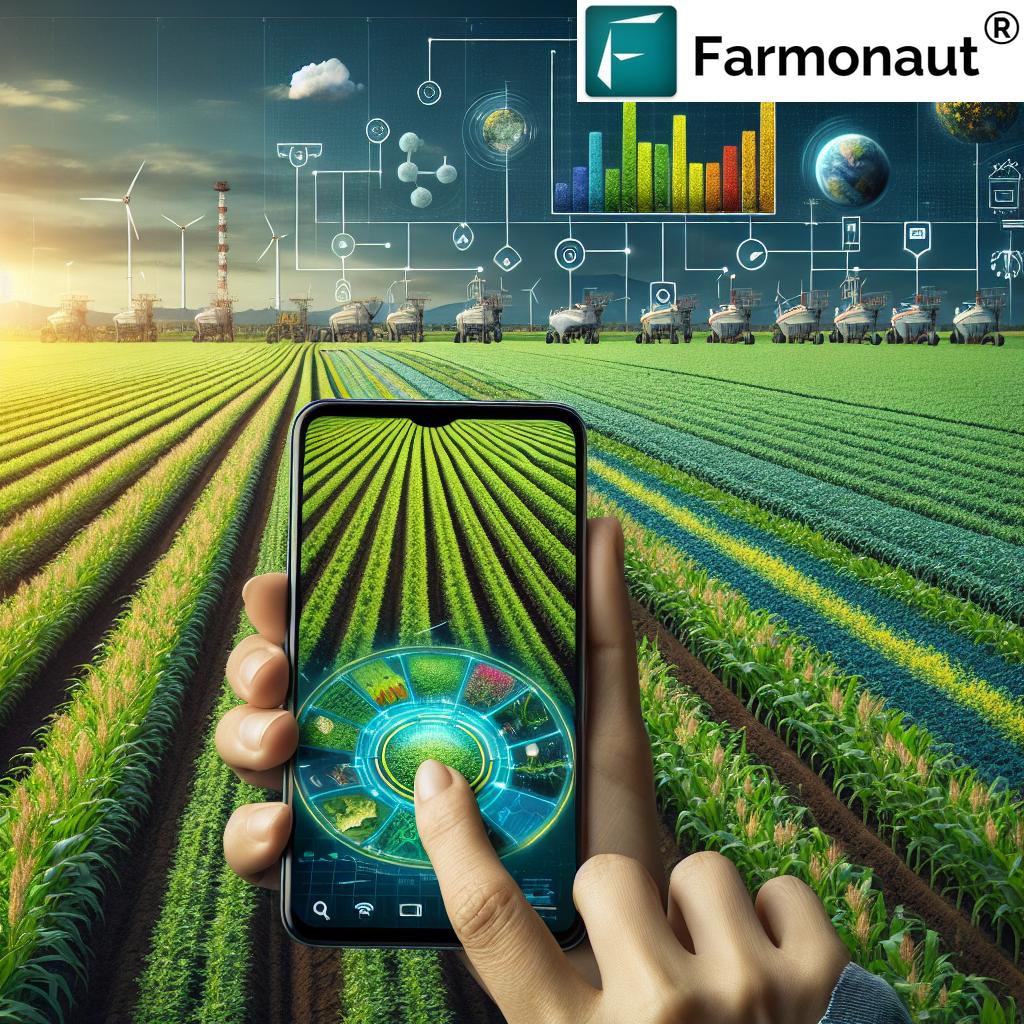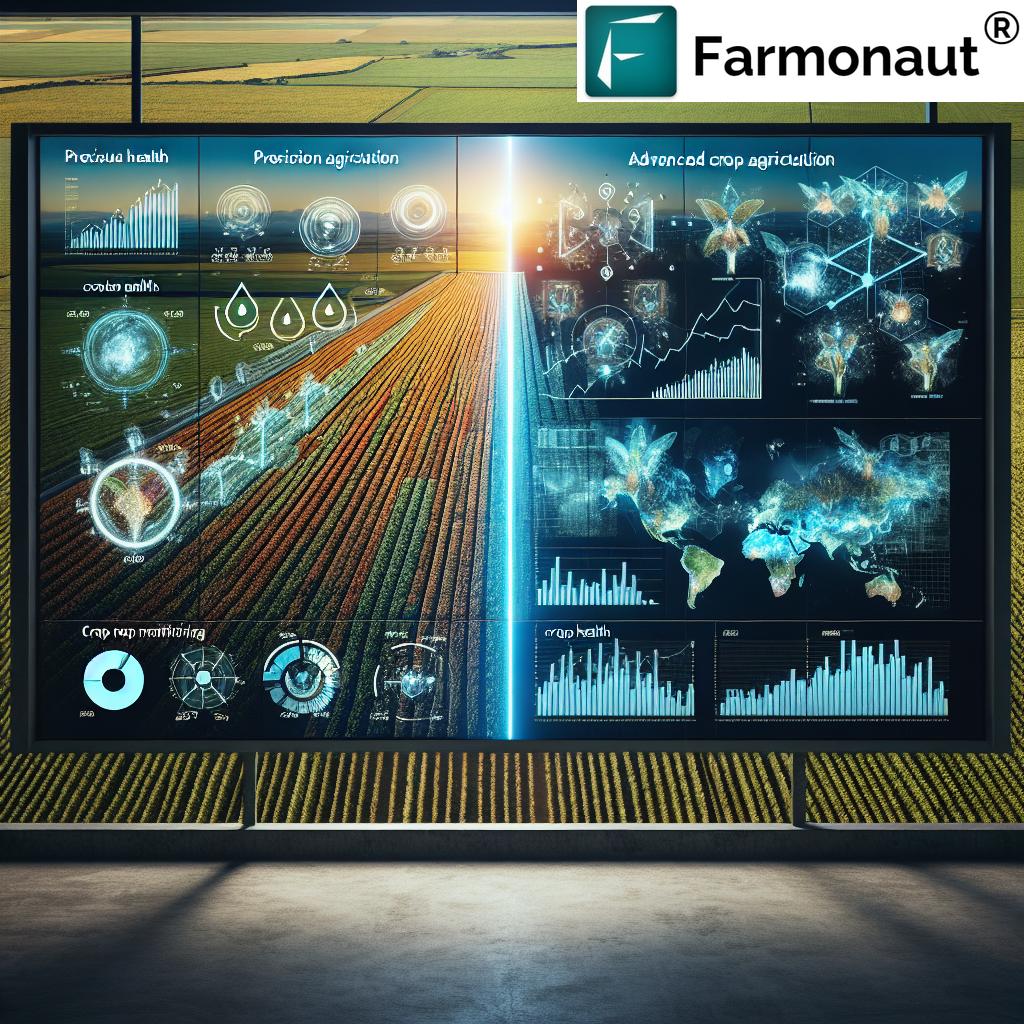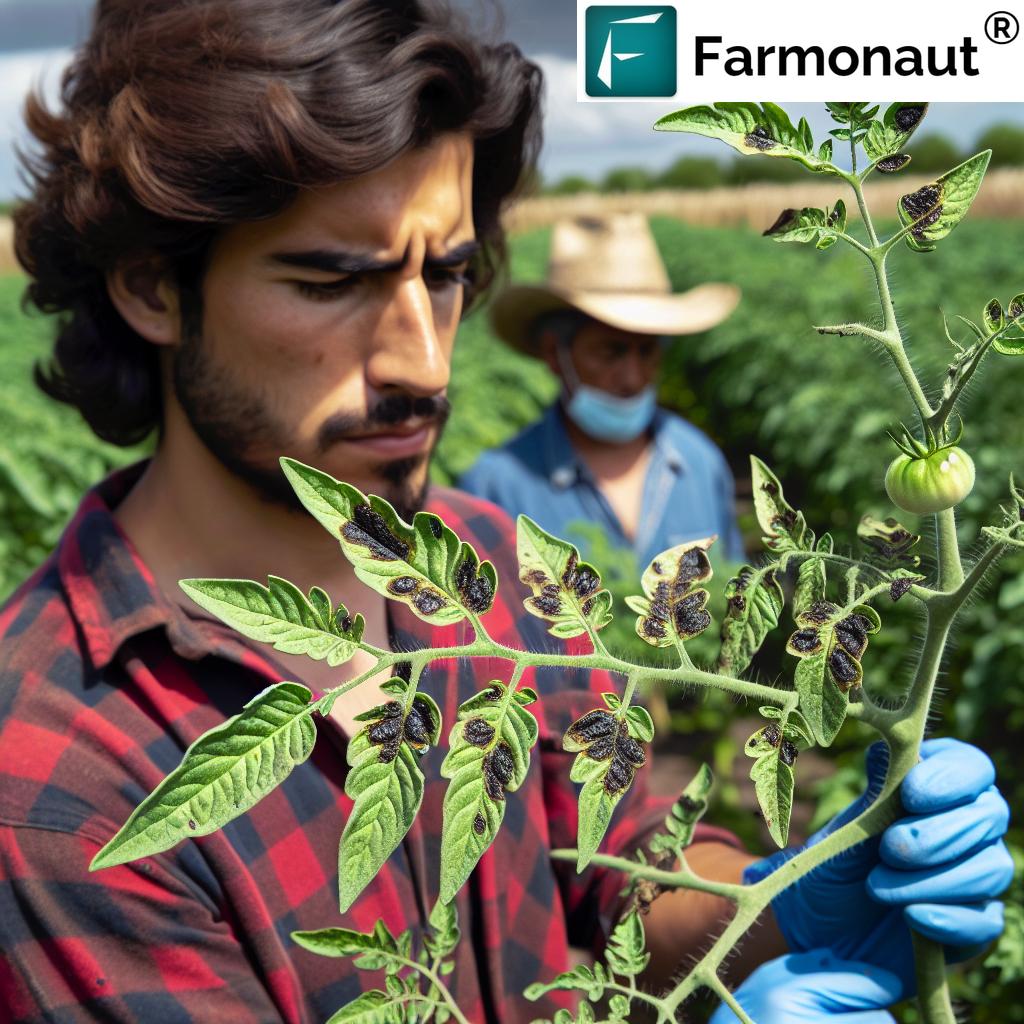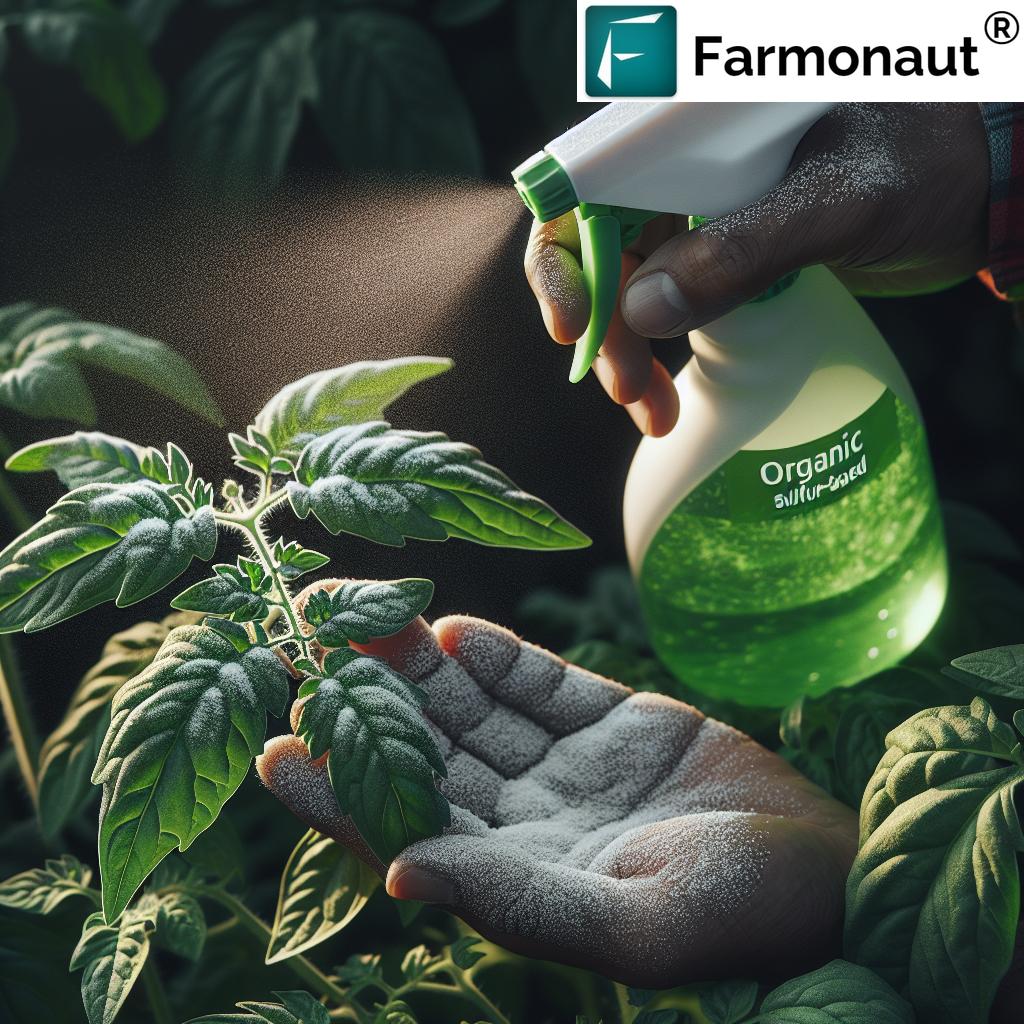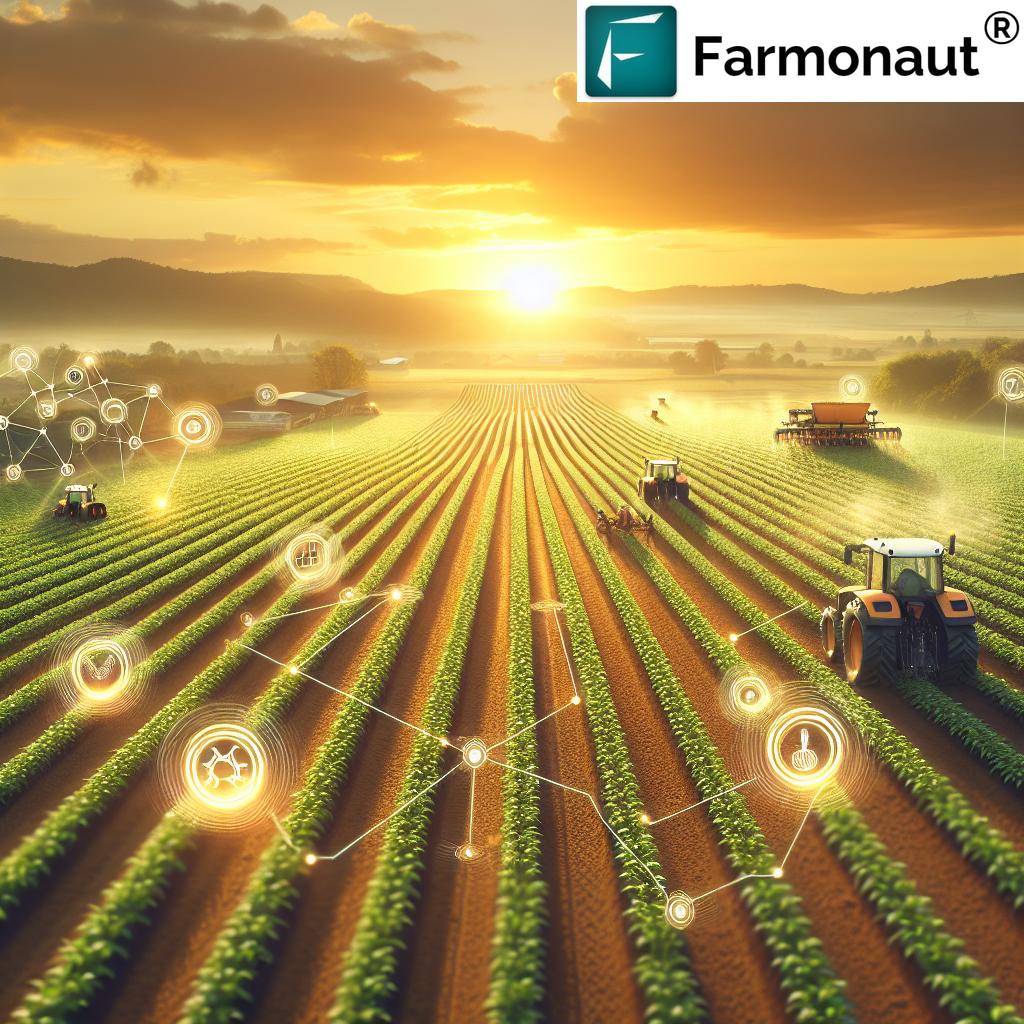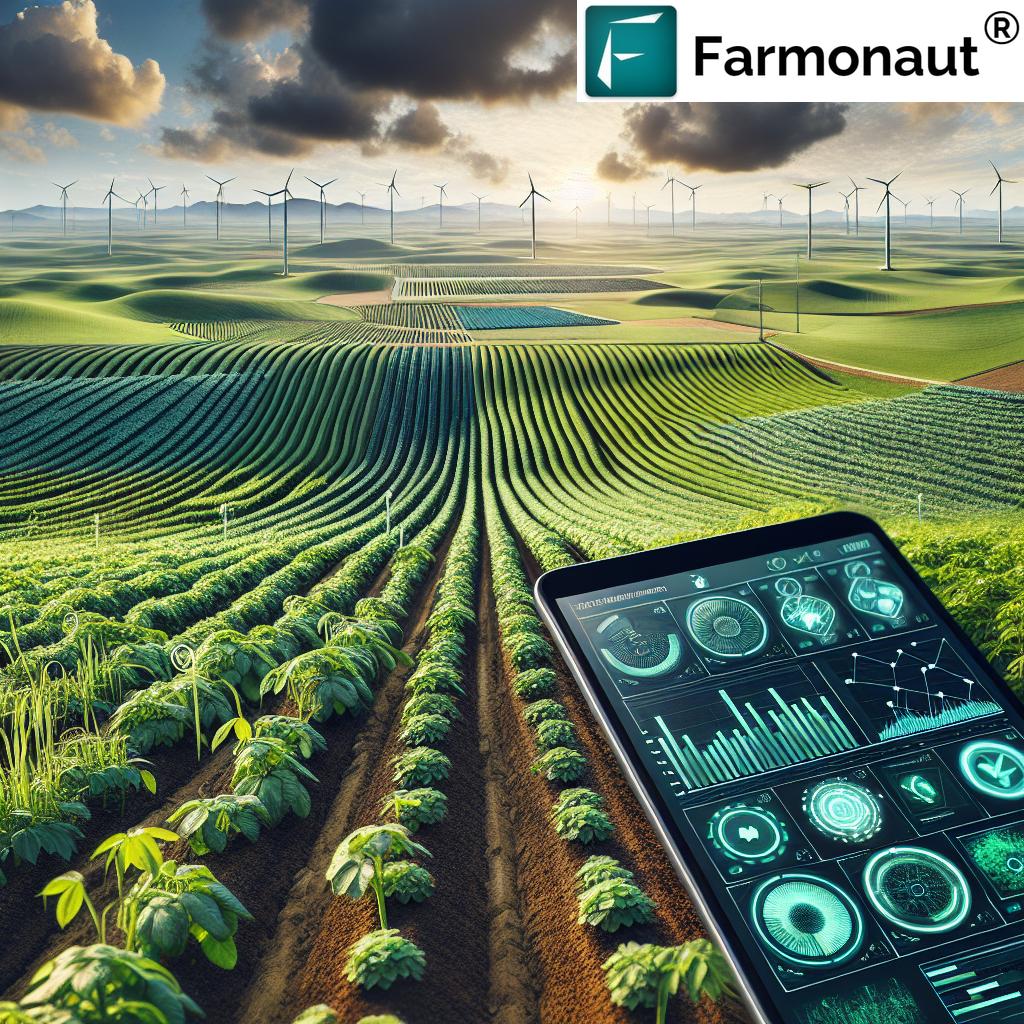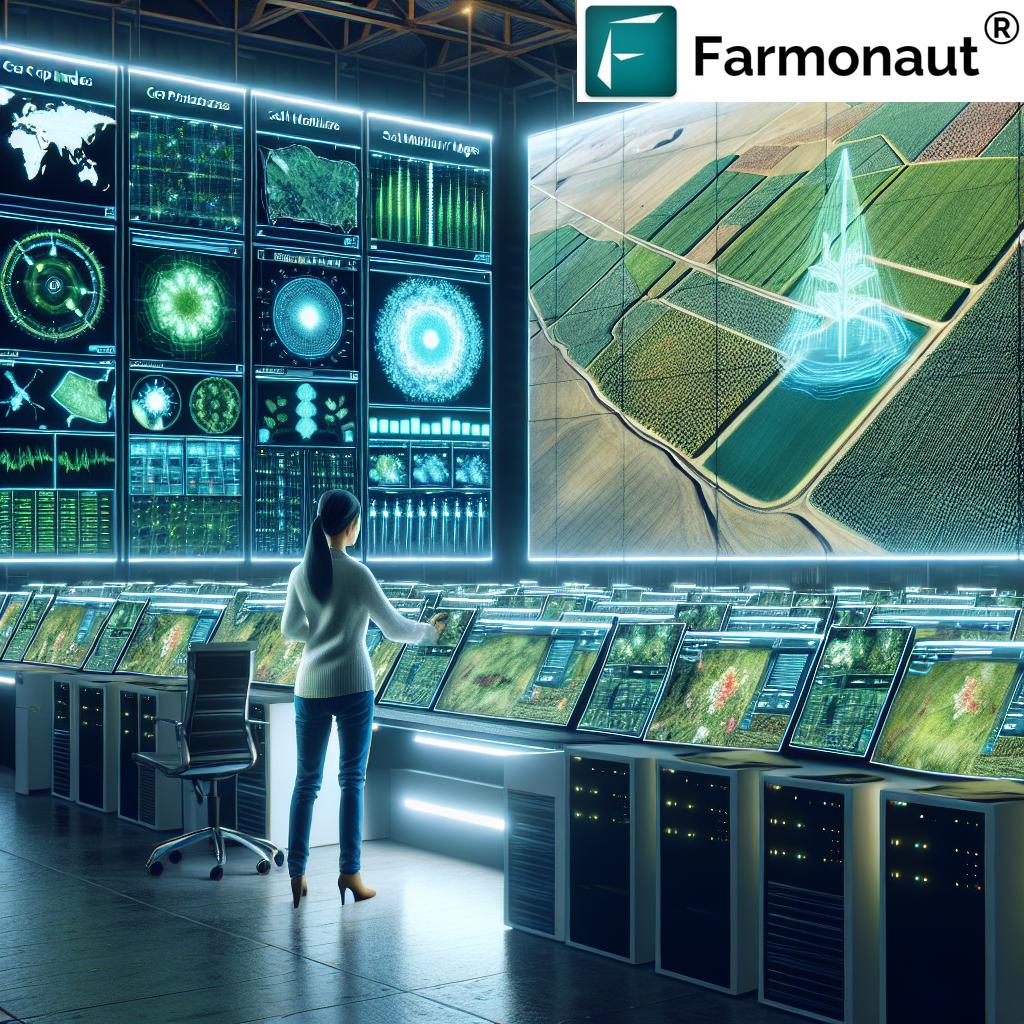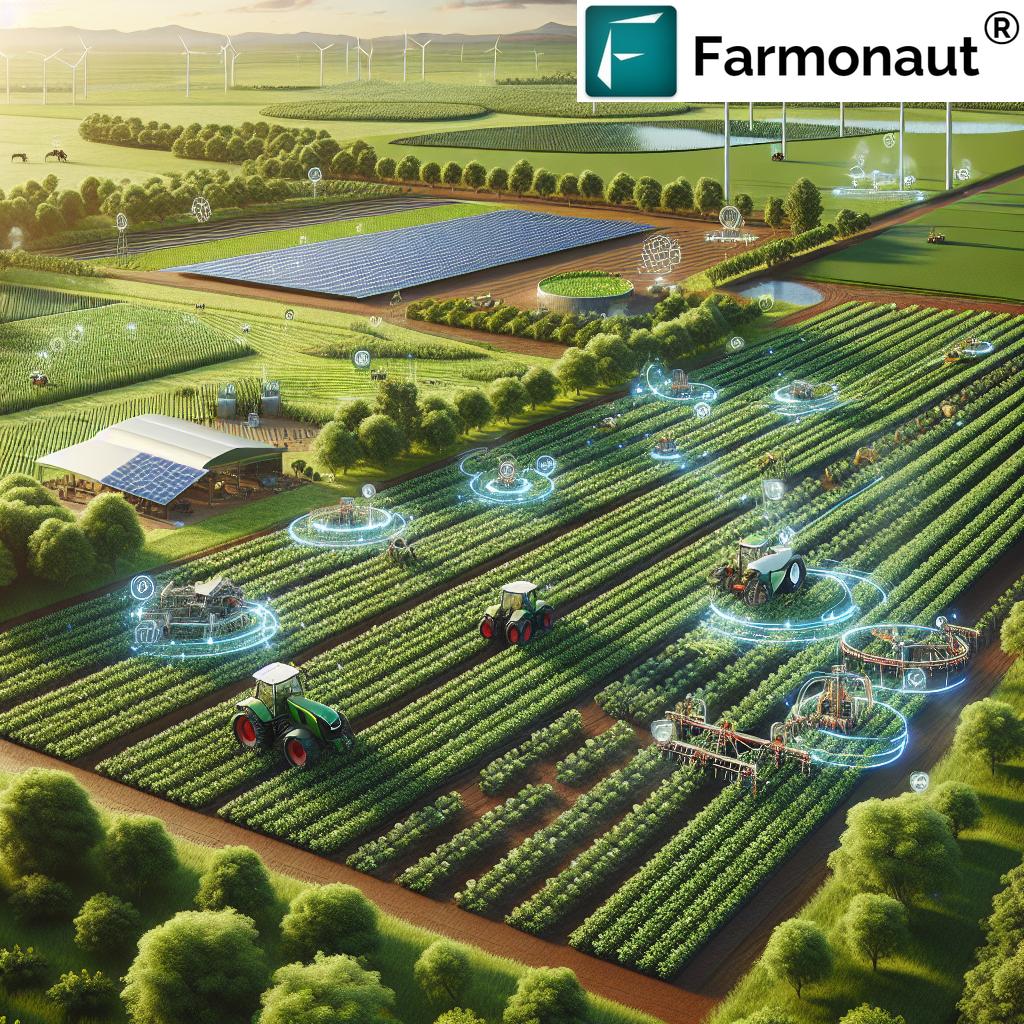Table of Contents
- Introduction
- Understanding Temperature’s Impact on Agriculture
- Advancements in Temperature Monitoring Technologies
- 7 Essential Applications of Temperature Monitoring in Agriculture
- Comparative Table: 7 Advanced Temperature Monitoring Technologies
- Farmonaut’s Satellite-Driven Solutions for Precision Agriculture
- Benefits of Implementing Temperature Monitoring Systems
- Challenges and Considerations
- Get Started: Farmonaut Subscription Plans
- FAQ: Temperature Monitoring in Agriculture
- Conclusion
Temperature Monitoring Agriculture: 7 Ways to Boost Yields
In today’s rapidly evolving agricultural landscape, consistent temperature monitoring can mean the difference between bountiful harvests and lost potential. Temperature monitoring in agriculture isn’t just a buzzword—it’s an essential part of modern farm management, directly impacting crop yields, sustainable farming practices, and the overall profitability of your farm.
Whether we’re managing an expansive agribusiness or a family-run field, understanding and controlling temperatures is key for optimal crop health, growth, and productivity. By leveraging advanced technologies—including smart sensors, satellite-based platforms, and intelligent data analytics—we can monitor everything from soil temperature to barn heat, enhancing resource efficiency and promoting sustainability.
Let’s explore the pivotal role of temperature monitoring systems in agriculture, discover seven effective ways to use these tools to boost yields, and see how Farmonaut is empowering us to thrive with affordable, precision-driven solutions.
Understanding Temperature’s Impact on Agriculture
Temperature is among the most influential factors affecting agriculture. It governs several interconnected aspects:
- Seed germination rates and viability
- Plant growth and development, including the onset and duration of flowering, fruiting, and maturation
- Photosynthesis efficiency—the foundation for crop yields and quality
- Soil microbial activity, nutrient availability, and root health
- Stress responses in livestock affecting productivity and feed conversion efficiency
- Increased susceptibility to diseases and pest outbreaks under extreme temperature fluctuations
When temperatures soar too high or dip too low, they can lead to stress in both plants and animals. For crops, heat stress or cold snaps may inhibit vital metabolic processes, curtail growth, reduce fruit set, or damage tissues irreversibly. On the flip side, increased susceptibility to diseases and pests often follows periods of unseasonal temperature fluctuations.
With livestock, ambient temperature monitoring is just as crucial. Cattle, poultry, and other animals are highly sensitive to environmental changes. A slight deviation from their optimal zone can adversely affect health and productivity, feeding rates, and even animal welfare.
Advancements in Temperature Monitoring Technologies
Modern temperature monitoring in agriculture has been revolutionized by a surge in innovative technologies. Traditional thermometers have given way to comprehensive digital monitoring systems that autonomously record data, interpret trends, and enable proactive interventions.
Key Technologies Shaping Crop Temperature Management
- Temperature Data Loggers: Devices designed to autonomously record temperature over time, offering valuable insights for environmental monitoring in fields, storage, and transport.
- Soil Temperature Sensors Agriculture: These sensors allow us to monitor soil temperature closely, which is vital for optimizing seed germination and planting times, as well as irrigation planning with temperature data.
- Ambient Temperature Sensors: Placed within fields, barns, or greenhouses, these devices ensure climate control and keep living environments in the optimal range for crop and livestock health.
- Farm Weather Stations: Integrated stations measure a multitude of meteorological parameters—temperature, humidity, wind speed, and rainfall. This comprehensive data supports granular decision making for sustainable farming practices.
Let’s explore the seven core applications where these technologies enable higher yields, superior resource efficiency, and a data-driven approach to farming.
7 Essential Applications of Temperature Monitoring in Agriculture
1. Optimized Crop Management
-
Irrigation Planning with Temperature Data: By analyzing temperature along with humidity and evapotranspiration rates through farm weather stations, we can schedule irrigation more precisely. This conserves water and sustains healthy crop growth.
Large-scale farm management solutions like those from Farmonaut help automate and visualize such data across extensive holdings. - Disease and Pest Control Management: Temperature fluctuations often precede disease outbreaks and increased pest activity. By continuously monitoring field conditions through agricultural sensors for farming, we can predict outbreaks and make timely interventions—reducing chemical usage and preventing major losses.
- Climate Control in Greenhouses: For high-value horticulture, greenhouses equipped with sensors automatically adjust temperature to the crops’ needs, promoting higher yields and improved produce quality.
2. Livestock Temperature Control & Management
- Ambient Temperature Monitoring in Barns: Livestock such as dairy cows and poultry are extremely sensitive to both heat and cold stress. Powerful ambient temperature sensors, placed within barns or coops, enable us to maintain optimal conditions and minimize adverse impacts on health and productivity.
- Feed Conversion Efficiency: Animals kept in their thermal comfort zone utilize feed more effectively, resulting in better growth rates and reduced feed costs for farmers.
3. Post-Harvest Storage & Transportation
-
Cold Chain Management: Sensitive produce—fruits, vegetables, dairy—requires uninterrupted temperature control during storage and transport. Through advanced temperature monitoring devices (e.g., with IoT or satellite-based alerts), we can safeguard quality and minimize post-harvest losses.
Explore blockchain-based product traceability for transparent monitoring of cold chain compliance, which not only improves logistics but also consumer trust.
4. Soil Temperature and Seed Germination Scheduling
- By using soil temperature sensors in agriculture, we determine the ideal planting times for every crop. This produces favorable conditions for seed germination and root development, directly influencing yields and vigor.
5. Resource Management and Sustainability
- Temperature monitoring systems enable precise resource allocation. We only water, ventilate, or heat as needed, conserving vital inputs.
- Farmonaut’s carbon footprinting tools allow us to track our operations’ environmental impact, supporting decision-making for sustainable farming practices.
6. Proactive, Data-Driven Farm Planning
- Historical and live temperature data enable us to plan rotations, alerts, and farm operations based on precise field conditions.
-
Farmonaut’s Satellite and Weather API delivers integrated weather data, helping us automate everything from irrigation scheduling to pest warnings.
API Developer Docs
7. Insurance and Risk Mitigation
- Consistent temperature monitoring, paired with satellite evidence, assists in risk assessment for crop insurance. Automated verification, like Farmonaut’s crop loan and insurance verification platform, simplifies claims and promotes financial resilience for farmers.
Comparative Table: 7 Advanced Temperature Monitoring Technologies
To help us decide which technologies are most suitable for specific farming scenarios, here’s a side-by-side comparison highlighting features, benefits, yield improvement potential, and estimated costs for the leading temperature monitoring solutions in agriculture.
| Technology/Method | How It Works | Estimated Yield Improvement (%) | Environmental Impact | Adoption Cost (Estimated) |
|---|---|---|---|---|
| IoT Sensors (On-Field Temperature & Soil) | Continuous real-time temperature and soil data collection at the field level. | 12–20% | Reduces water & energy use; enables site-specific input application. | $$ (Mid-range, per hectare) |
| Satellite Monitoring (e.g., Farmonaut Platform) | Uses multispectral satellite imagery to monitor temperature-influenced crop health remotely. | 8–18% | Low on-farm carbon footprint; suitable for wide-area applications. | $ (Affordable monthly subscription) |
| Drones with Thermal Cameras | Provides high-definition thermal imaging of crop stress “hot spots”. | 7–15% | Efficient for targeted monitoring; some energy/fuel use for flights. | $$$ (Higher, upfront hardware cost) |
| Predictive Analytics Platforms | AI analyzes temperature and weather trends for risk management and recommendations. | 10–22% | Data-driven efficiency, reduces overuse of farm inputs. | $$ (Software as a Service) |
| Ground Sensors (Humidity & Soil Moisture) | In-field probes monitor microclimate, supplementing temperature data. | 8–12% | Optimizes water usage, boosts soil health. | $$ (Per sensor basis) |
| Automated Weather Stations | On-site stations measure temperature, humidity, wind, and rainfall continuously. | 11–16% | Supports robust, all-weather farm planning. | $$ (Moderate system investment) |
| Smart Greenhouse Controls | Automated internal climate adjustment using temperature, humidity, and CO₂ sensors. | 13–25% | Significantly reduces water and fertilizer overuse. | $$$ (High initial setup, ongoing savings) |
Farmonaut’s Satellite-Driven Solutions for Precision Agriculture
Integrating temperature monitoring in agriculture isn’t just about placing a few sensors in the ground—it’s about accessing real-time, field-wide intelligence that scales from small family plots to nationwide agribusiness.
Farmonaut stands at the forefront of this revolution, providing a suite of services focused on data-driven crop temperature management and resource optimization:
- Satellite-Based Crop Health Monitoring: Through high-resolution, multispectral satellite imagery, Farmonaut continuously tracks vegetation health (NDVI), soil moisture, and temperature-influenced anomalies—empowering us to make informed irrigation and pest management decisions at scale.
- Jeevn AI Advisory System: This personalized, real-time advisory analyzes satellite data and weather patterns to deliver custom guidance on crop management, climate risks, and more—improving both efficiency and sustainability.
- Blockchain-Based Traceability: Farmonaut traceability solutions guarantee transparent, tamper-proof records of temperature control in transit and storage, validating produce freshness from field to market.
- Carbon Footprinting: With carbon footprint tracking, we monitor and manage our overall environmental impact—a huge advantage for modern sustainable farming practices.
- Accessible, Mobile-First Platform: Farmonaut lets us monitor fields, crops, and conditions via Android, iOS, and web, making precision agriculture affordable and scalable for every farmer.
Digitally transform how you monitor and control conditions—boost yields, lower costs, and ensure sustainability with the Farmonaut app available on all devices.
Benefits of Implementing Temperature Monitoring Systems
- Enhanced Resource Efficiency: With real-time temperature data, we can optimize resource usage (water, fertilizer, energy), reducing waste and operational costs.
- Improved Crop Yields and Quality: Ensuring optimal conditions for crop growth means healthier, more resilient crops and higher revenues.
- Sustainability: By deploying sensors and digital monitoring, we support sustainable farming practices, improving soil health and minimizing our carbon footprint.
- Proactive Disease and Pest Management: Timely detection of temperature-induced stress or anomalies allows for immediate interventions, safeguarding our investments.
- Lower Operating Costs: The integration of digital monitoring systems speeds up decision-making and cuts input expenses—ultimately promoting profitability.
Challenges and Considerations
While the case for temperature monitoring in agriculture is compelling, several practical challenges require careful consideration:
- Initial Investment Costs: High-tech sensors, automation infrastructure, and digital platforms may require upfront capital, though they pay dividends over time.
- System Maintenance: Sensors and weather stations demand periodic calibration and servicing for sustained accuracy.
- Data Management: The influx of real-time environmental data necessitates effective handling—through user-friendly dashboards or AI-powered interpretation (like Jeevn AI).
- Training and Adoption: Ensuring that farm workers or managers are trained in digital agriculture methods is vital for achieving the promised yield improvements.
To maximize the benefits while minimizing challenges, we recommend exploring subscription-based, scalable platforms like Farmonaut, which democratize access to advanced temperature monitoring technologies without the need for massive, upfront hardware investments.
Get Started: Farmonaut Subscription Plans
Farmonaut offers flexible subscription models tailored for individual farmers, cooperatives, agribusinesses, and even government/NGO users. Satellite updates, automation, and crop health monitoring are just a tap away.
Ready to begin? Download and try the Farmonaut app for comprehensive temperature monitoring and intelligent farm management:
FAQ: Temperature Monitoring in Agriculture
Why is temperature monitoring so critical in agriculture?
Temperature monitoring directly affects crop yields, plant health, seed germination, and livestock productivity. By ensuring optimal growth conditions, farmers can prevent crop losses due to heat/cold stress, disease outbreaks, and inefficient resource use.
How do soil temperature sensors in agriculture help?
Soil temperature sensors allow us to determine the best planting times, schedule irrigation more efficiently, and track root development conditions—all of which promote vigorous growth and maximize crop productivity.
What are the benefits of using a platform like Farmonaut?
Farmonaut’s satellite-based services provide real-time insights into field temperatures, crop health, soil moisture, and weather patterns, enabling data-driven decisions for higher yields, reduced costs, and greater sustainability. Its blockchain traceability, carbon footprinting, and insurance verification modules further enhance farm security and transparency.
Can temperature monitoring help with sustainable farming practices?
Absolutely. By only applying water, energy, or fertilizers as dictated by real-time data, we can support sustainable farming practices, reduce environmental impact, and improve the resilience of our farming systems.
How can I get started with advanced temperature monitoring?
Begin by assessing your farm’s current needs (crop, livestock, region). Farmonaut’s platform offers a fast, affordable entry point—with app-based, satellite-driven tools for both small and large operations. Integration is simple, with user-friendly support and scalable packages.
Conclusion
Temperature monitoring in agriculture is no longer optional; it’s a foundational component of modern, sustainable farming. From optimizing irrigation planning and pest interventions to supporting high-value greenhouse crops and livestock management, the right mix of sensors, data platforms, and AI-driven tools can help us optimize yields, boost profitability, and promote sustainability.
By embracing these advanced temperature monitoring technologies—and platforms like Farmonaut—we equip ourselves to thrive in the face of climate change, market competition, and increasing food demands. Make precision agriculture accessible, affordable, and scalable: integrate temperature measurement and control at the heart of your farm management strategy today.
Empower your farm with smart, data-driven temperature management. Because with Farmonaut, the future of agriculture is in our hands.








